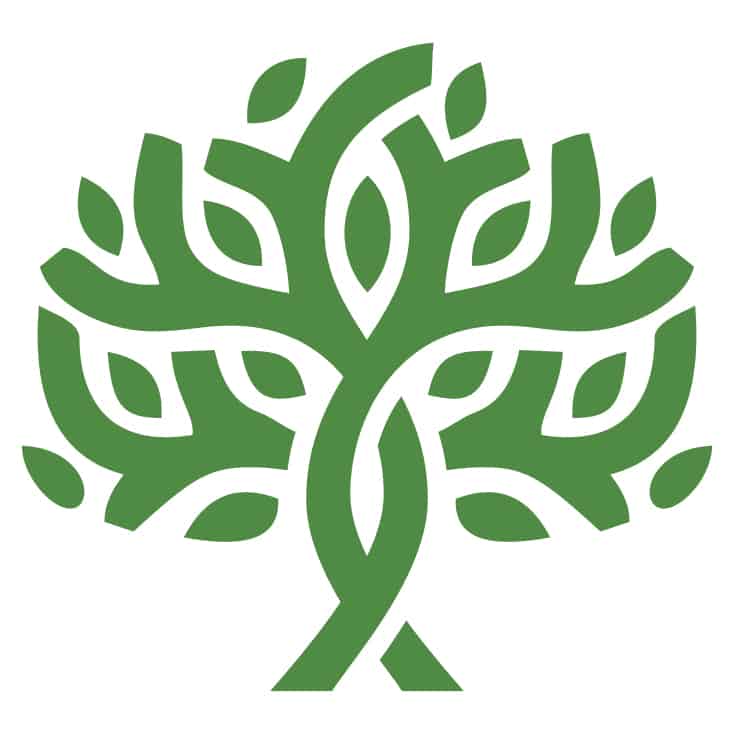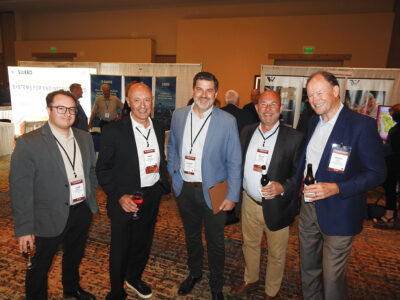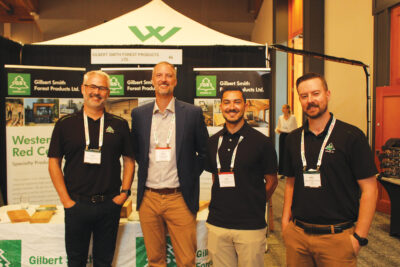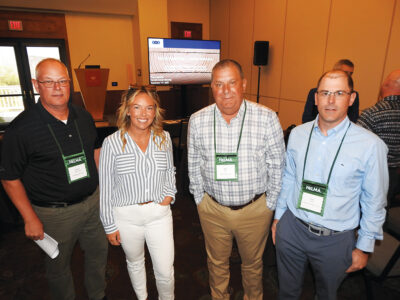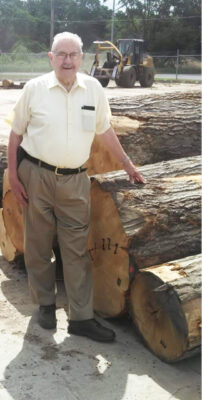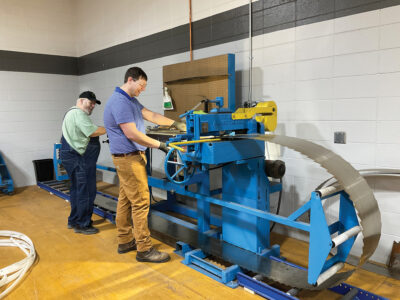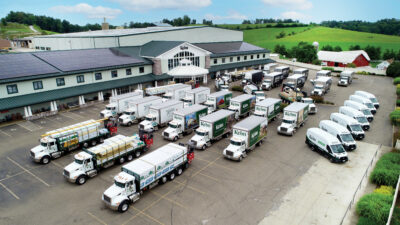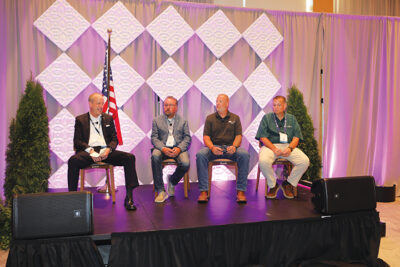Stringent standard assures consistent value and performance
Cross-laminated timber (CLT) is lightweight, yet extremely strong with superior acoustic, fire, seismic and thermal performance. It offers fast and easy installation, with virtually no waste onsite. CLT offers design flexibility and low environmental impacts, making it a strong alternative to conventional materials like concrete, masonry or steel—particularly on larger construction projects.
CLT manufactured in North America must meet stringent product standards and be certified to the ANSI/APA PRG 320 Standard for Performance-Rated Cross-Laminated Timber. Products manufactured outside of North America may not meet these same performance expectations. APA – The Engineered Wood Association explains key characteristics evaluated in the certification process.
The North American Difference
CLT design standards in the U.S. (the NDS) and Canada (CSA O86) require that the CLT products meet the requirements of and be certified to ANSI/APA PRG 320. When comparing North American CLT to products manufactured elsewhere, it’s important to consider the following characteristics.
Design Property Compatibility
The design capacities published in ANSI/APA PRG 320 were derived analytically using the lumber properties published in the NDS and CSA O86. Imported lumber may have different characteristics, may not be recognized in the NDS and CSA O86 and has published design values that are incompatible with those of North American lumber. Therefore, design properties for CLT products manufactured with foreign species lumber should be carefully examined for compatibility with North American CLT design standards.
Adhesive Heat Durability
The adhesives used in ANSI/APA PRG 320 CLT are required to meet heat durability requirements to ensure the adhesives will not melt at elevated temperatures. The heat durability of CLT adhesives is required by ANSI/APA PRG 320 to be evaluated in accordance with ASTM D7247, Standard Test Method for Evaluating the Shear Strength of Adhesive Bonds in Laminated Wood Products at Elevated Temperatures, and the CSA O177 flame test. Most CLT adhesives used outside of North America have not been evaluated for heat durability. The use of adhesives that have not been evaluated for heat durability could impose a serious life safety concern in the event of a structure fire.
Moisture Durability
CLT moisture durability is required by ANSI/APA PRG 320 to be evaluated based on the same accelerated aging (vacuum-pressure-soak) tests as used for structural glued laminated timber (glulam), which has decades of proven success in structural applications around the world.
The face-bond criteria (the minimum percentage of wood failure and the maximum allowance for gluebond delamination after accelerated aging tests) specified in ANSI/APA PRG 320 for CLT is the same as that for glulam. These moisture durability criteria represent the most stringent requirements in the world for CLT to ensure its long-term performance. Most CLT products manufactured outside of North America have not been evaluated to the same moisture durability and face-bond criteria as ANSI/APA PRG 320. Since moisture durability of imported products have not been evaluated to the same criteria as North American CLT, long-term performance capability is unknown and may pose a risk of decreased structural performance and increased delamination potentials over time.
Fire Performance
Fire resistance of CLT products, when determined in accordance with NDS or CSA O86, is based on the requirements that CLT products are certified to ANSI/APA PRG 320. The rigorous adhesive qualification requirements specified in ANSI/APA PRG 320 ensure the integrity of CLT under the most severe fire conditions. New CLT adhesives are required to qualify with full-scale fire test in accordance with ASTM E119, Standard Test Methods for Fire Tests of Building Construction and Materials, in the U.S. or CAN/ULC S101, Standard Methods of Fire Endurance Tests of Building Construction and Materials, in Canada. This is not common practice outside North America.
Most importantly, CLT products certified to ANSI/APA PRG 320-2018 or ANSI/APA PRG 320-2019 are required to use structural adhesives that meet the requirements of the full-scale Compartment Fire Test (CFT) specified in the standards and do not result in the char layer fall-off when exposed to fire, which is known to cause a second flash-over and fire re-ignition. The 2021 IBC and IRC and the 2020 NBC specifically require CLT to be certified to these new standards. Therefore, it’s important the designer, contractor and building official ensure the CLT products comply to these new standards. Most CLT products manufactured outside North America do not use adhesives that meet the stringent requirements of ANSI/APA PRG 320-2018 or ANSI/APA PRG 320-2019 and could result in a serious fire safety and code-compliance concern.
Always Look for the APA Trademark
The APA trademark is your assurance the CLT was manufactured by North American producers whose products have been successfully qualified and certified to ANSI/APA PRG 320. The ANSI/APA PRG 320 standard is recognized in the International Building Code (IBC) and International Residential Code (IRC) in the U.S. and is required for using the design provisions specified in the National Design Specification for Wood Construction (NDS). In Canada, ANSI/APA PRG 320 is recognized by the National Building Code (NBC) when the product is applied in designs that meet the requirements of CSA O86, Engineering Design in Wood.
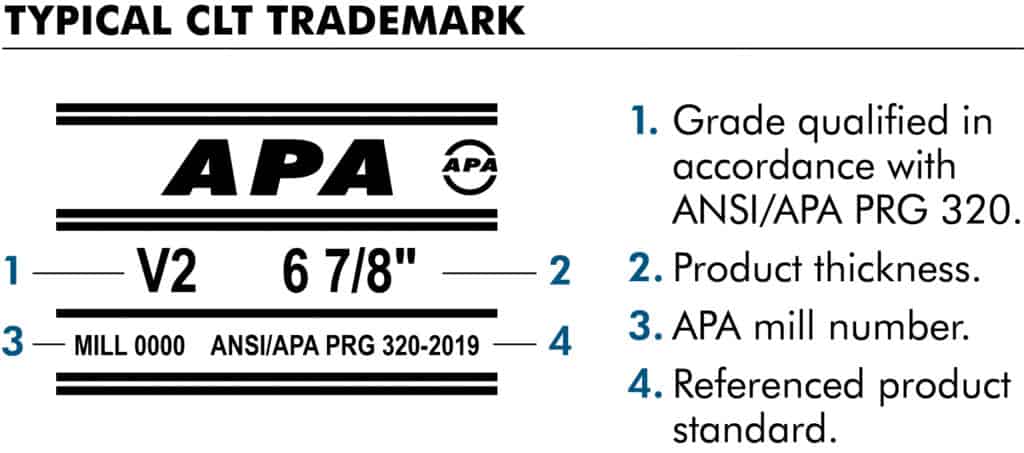
Find additional information in Cross-Laminated Timber—North American CLT vs. Imported Product, Form S500 (www.apawood.org/publication-search?q=s500) in the APA Resource Library.
